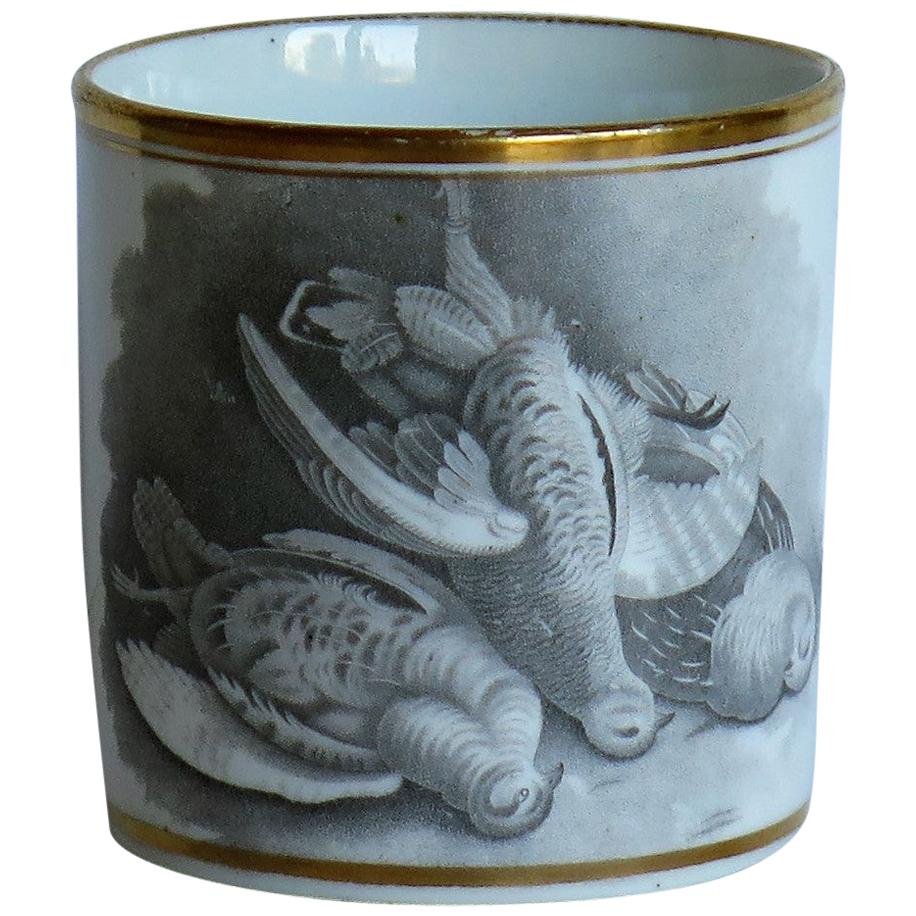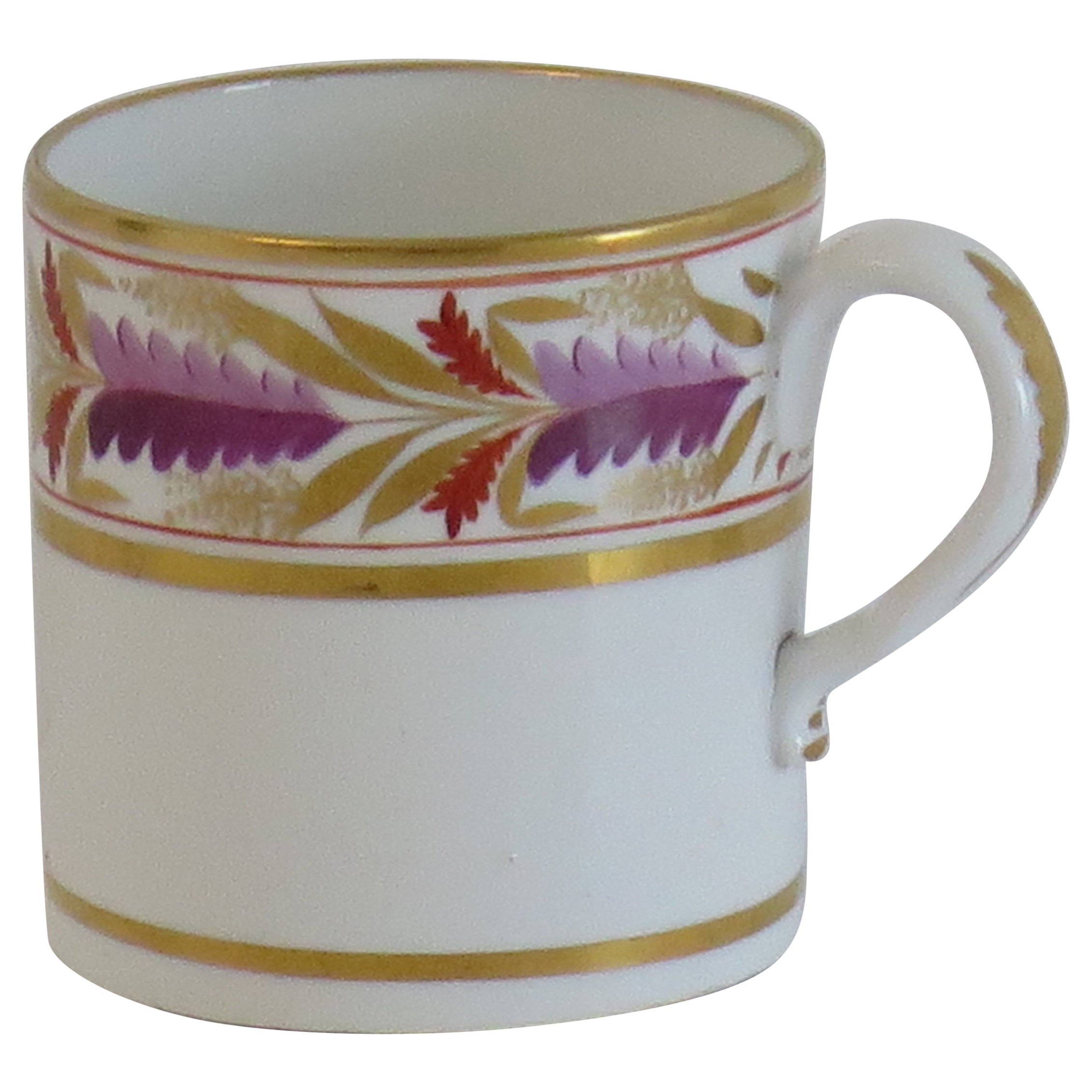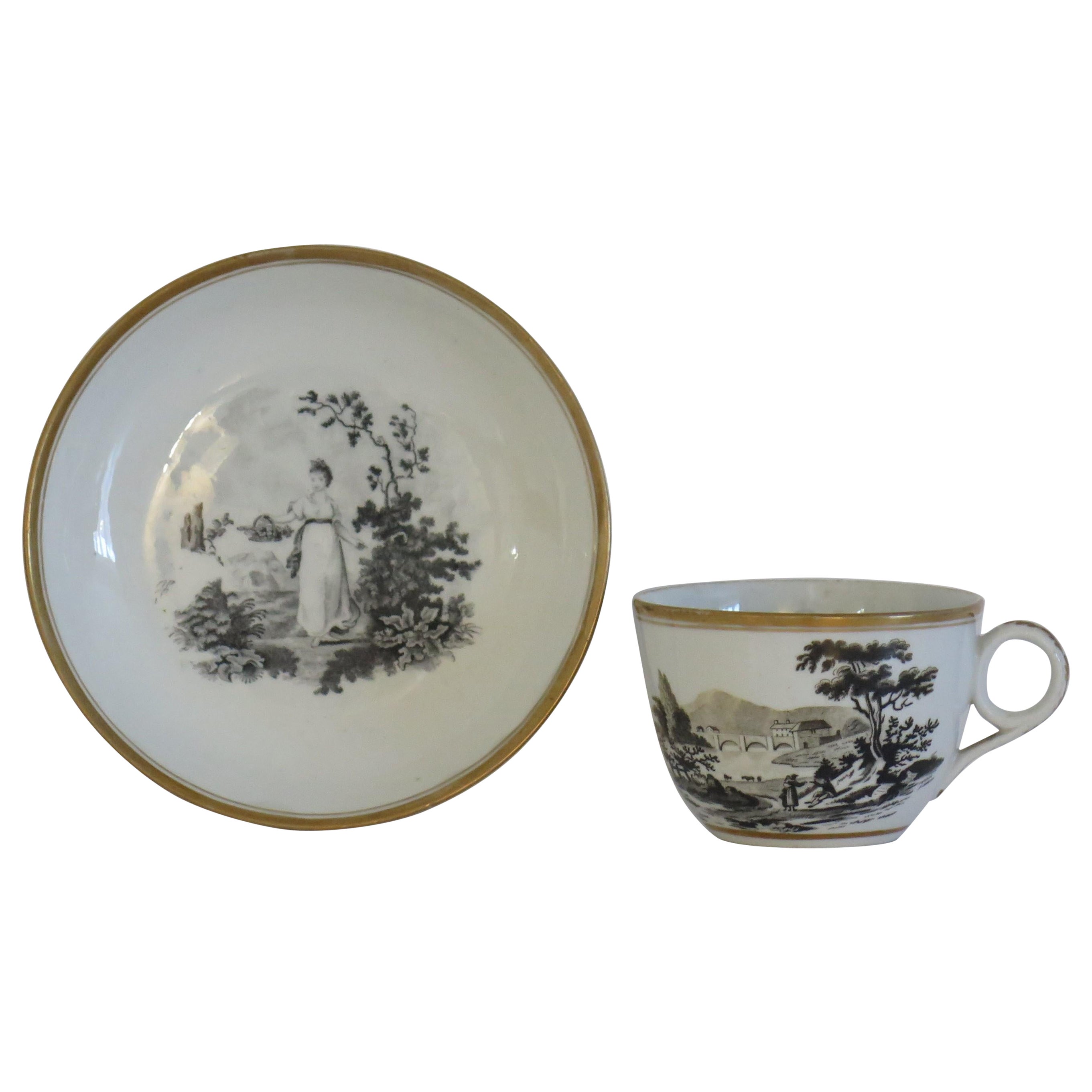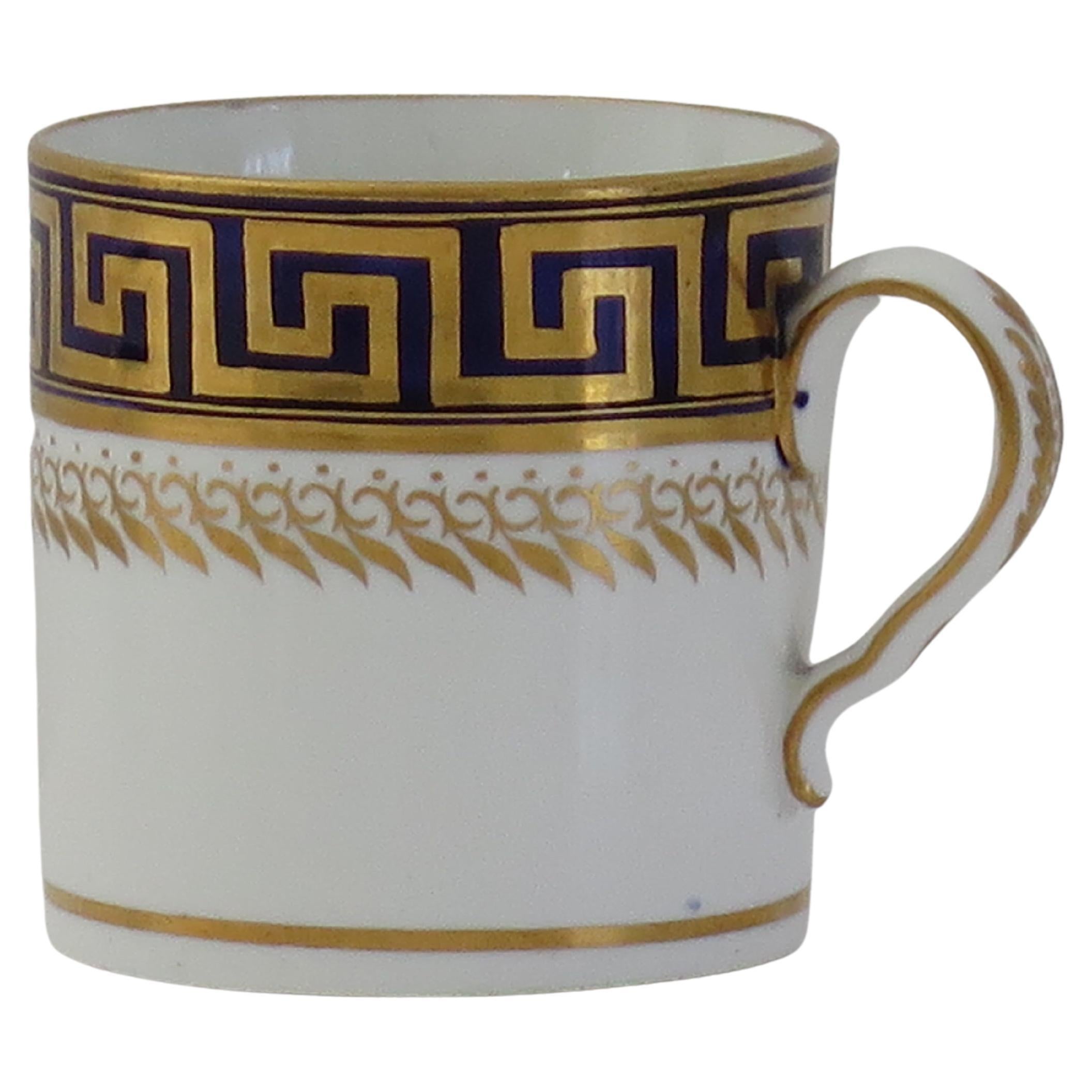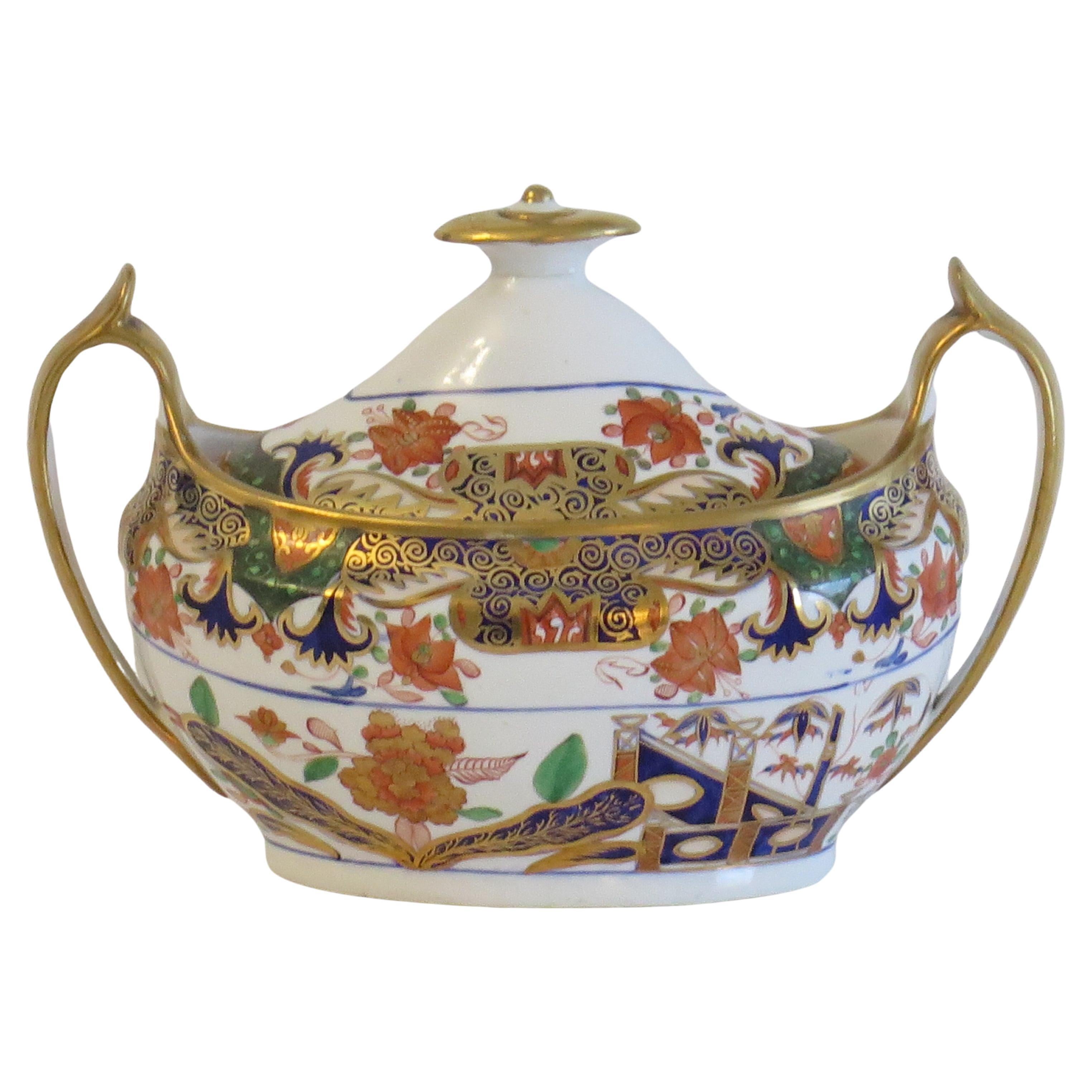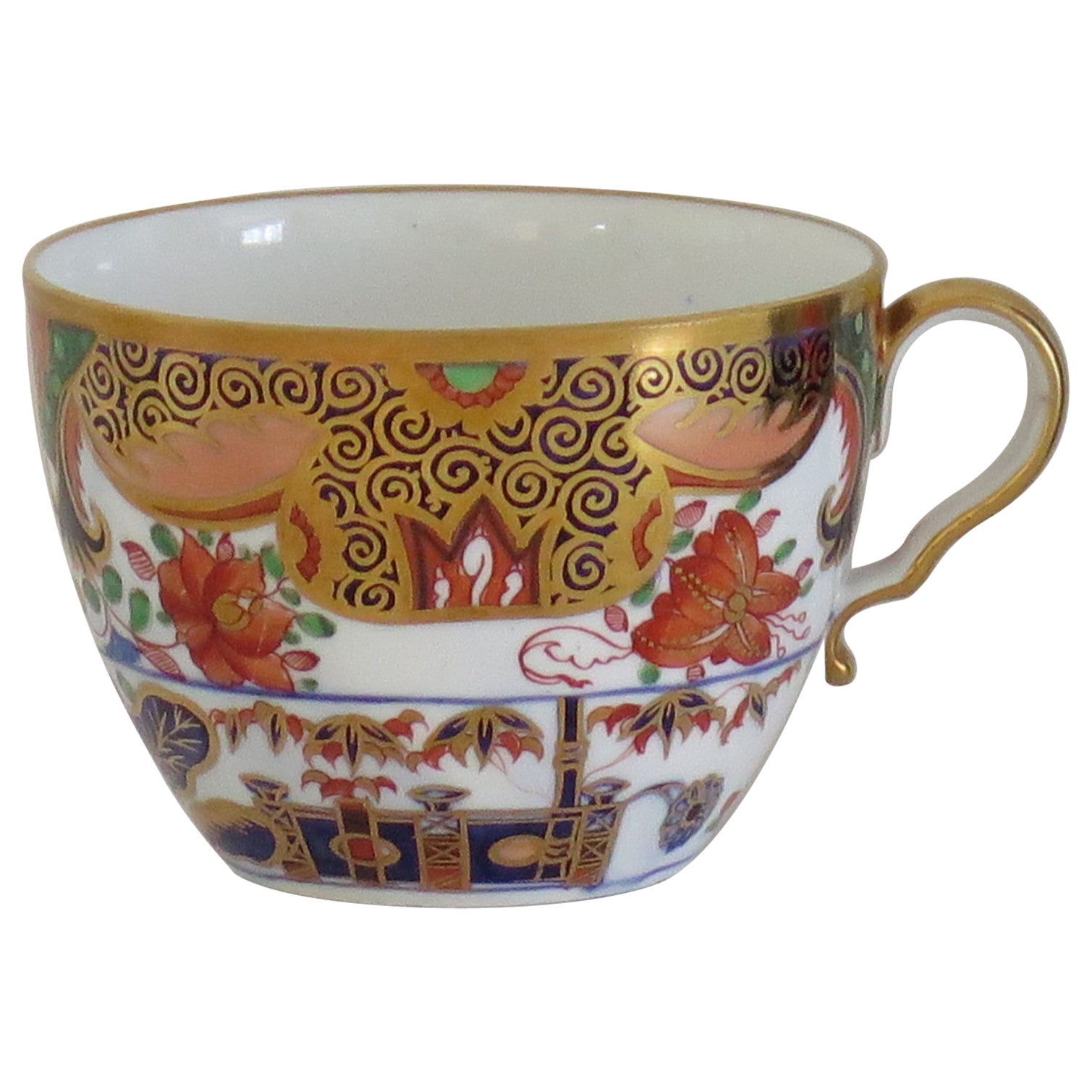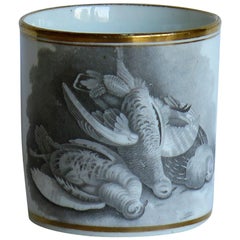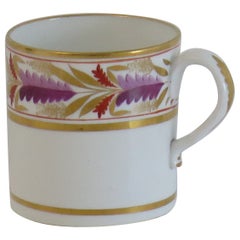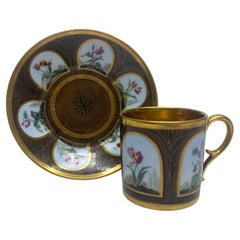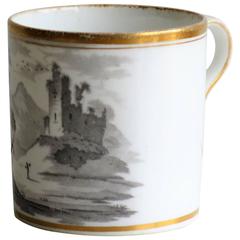
Georgian, Spode Porcelain Coffee Can, Bat Printed Landscape Ptn. 557, circa 1810
View Similar Items
Georgian, Spode Porcelain Coffee Can, Bat Printed Landscape Ptn. 557, circa 1810
About the Item
- Creator:Spode (Manufacturer)
- Dimensions:Height: 2.57 in (6.53 cm)Width: 3.25 in (8.26 cm)Depth: 2.57 in (6.53 cm)
- Style:Georgian (Of the Period)
- Materials and Techniques:Porcelain,Glazed
- Place of Origin:
- Period:
- Date of Manufacture:circa 1810
- Condition:Wear consistent with age and use. Minor losses. Some gilding loss due to use. No Damage and No Restoration.
- Seller Location:Lincoln, GB
- Reference Number:Seller: P 5461stDibs: LU99036107123
Spode
Spode is one of the oldest and most distinguished of the great pottery companies of Staffordshire, the time-honored home of English ceramics. The firm’s blue and white bone china transferware is a timeless classic. Spode dishes compose the sort of elegant dinner service that most of us envision on a traditional holiday table.
The company was established in 1770 in Stoke-on-Trent by Josiah Spode, a friend and neighbor of another estimable English ceramist, Josiah Wedgwood. The Wedgwood firm first came to prominence for its tableware, which quickly gained favor in aristocratic households throughout Britain and Europe.
Spode was particularly known for two technical achievements in the firm’s early decades. The first was to develop a standard formula for the making of bone china — a type of porcelain (made with a mixture of bone ash, minerals and clay) that is dazzlingly white and so strong it can be used to create very thin translucent plates and vessels.
The other advancement was to perfect the making of transferware. That process involves the transfer of pictorial images inked on tissue paper — such as the garden scenery in the famous Willow dish patterns — onto ceramics that are then sealed with a glaze.
From the 1820s onward, Spode enjoyed tremendous success both in Britain and elsewhere owing to the beauty and vitality of its decorative imagery. By some counts, Spode created more than 40,000 patterns in the 19th century.
In 1833, following the sudden death of Josiah Spode III, business partner W. T. Copeland took over the company and changed its name to Copeland Spode (it later changed again, this time to W. T. Copeland and Sons). Collectors regard Copeland-marked pieces as Spode china. The Spode brand was revived in 1970.
Many favorite Spode patterns — among them Blue Italian, Indian Tree, Greek and Woodland — date to the company’s early years. Spode’s most popular pattern, Christmas Tree, was introduced in 1938.
Prices for antique and vintage Spode china vary widely, based on the size of the service, its condition and the pattern. An antique dinner service for 12 people or more, in good repair and complete with cups and serving dishes, will generally cost between $10,000 and $20,000. Such Spode services become heirlooms — a proud and timeless addition to a family’s table. And as you will see on these pages, Spode’s rich and varied wares offer a visual feast in and of themselves.
Find Spode serveware, ceramics and decorative objects on 1stDibs.
- Georgian Spode Porcelain Coffee Can Bat Printed Game Birds Pattern, circa 1810By SpodeLocated in Lincoln, LincolnshireThis is a very good example of an English George III period, porcelain, coffee can, made by Spode, England in the early 19th century, circa 1810. The can is nominally straight sided and has the Spode loop handle with a pronounced kick or kink to the lower part, with a lower attachment that curves out slightly from the cup. Spode is the only factory with a handle of this exact shape. The can is decorated with one of their grey "bat printed" designs, showing game birds collected after the shoot. It also has hand painted gilded detail to both rims and the handle. Similar Spode bat printed...Category
Antique Early 19th Century English Georgian Ceramics
MaterialsPorcelain
- Georgian Spode Coffee Can Porcelain Pattern 1928, circa 1810By SpodeLocated in Lincoln, LincolnshireThis is a very good quality porcelain coffee can by Spode of Staffordshire, England, made during the very early 19th century, George 111rd period, circa 1805. The coffee can is no...Category
Antique Early 19th Century English George III Ceramics
MaterialsPorcelain
- Georgian Spode Coffee Can Porcelain Floral Leaf Gilded Pattern, circa 1810By SpodeLocated in Lincoln, LincolnshireThis is a good quality porcelain coffee can that we attribute to Spode of Staffordshire, England, made during the very early 19th century, George 111rd period, circa 1810. The coffee can is nominally parallel, with a loop handle having one lower kink, characteristic of the Spode handle. It has a fairly deep foot recess with obtuse corners and is unmarked to the base. The pattern is one of Spode's transfer printed floral leaf designs in a burnt orange colour around the upper border, all between gold gilt rings with a further gold gilt ring just above the base and hand gilding to the outer handle. We date this piece to the late George third...Category
Antique Early 19th Century English George III Ceramics
MaterialsPorcelain
- Georgian Newhall Porcelain Duo Tea Cup and Saucer Bat Printed Ptn, circa 1805By New HallLocated in Lincoln, LincolnshireThis is a bat printed porcelain Tea cup and saucer, by New Hall, dating to the early 19th century George 111rd period, circa 1805. Both pieces are well potted, the cup on a low foot with a ring handle. Both pieces have a bat printed design; the cup with a country scene of people by a river with houses, bridge and trees, the saucer with a lady holding a basket of flowers standing by a bush in a country setting. There is hand gilding to all the rims and the outer handle. Overall, a fine example of Newhall porcelain...Category
Antique Early 19th Century English Georgian Ceramics
MaterialsPorcelain
- Early 19th Century Spode Porcelain Coffee Can Hand Gilded Pattern 1099, Ca 1810By SpodeLocated in Lincoln, LincolnshireThis is a fine example of an English George III period, porcelain, coffee can (cup), made by Spode in the early 19th century, circa 1810. The can is nominally straight sided and h...Category
Antique Early 19th Century English Regency Ceramics
MaterialsPorcelain
- Early Machin Porcelain Coffee Can in The Proposal Chinoiserie ptn, circa 1810By MachinLocated in Lincoln, LincolnshireThis is a porcelain coffee can or cup by Machin with a very good Chinoiserie pattern and dating to very early in the 19th century, late Georgian period. This coffee can has nominall...Category
Antique Early 19th Century English Chinoiserie Ceramics
MaterialsPorcelain
- Spode Porcelain Tea Service, Imari Tobacco Leaf Pattern 967, Georgian ca 1810By SpodeLocated in London, GBThis is a stunning tea service made by Spode in about 1810, consisting of a large teapot with cover, a milk jug, a sucrier with cover, a slop bowl, a saucer dish and 4 teacups with s...Category
Antique 1810s English Regency Porcelain
MaterialsPorcelain
$3,400 / setFree Shipping - Spode Three Georgian Imari Pattern 967 Decorated Porcelain PlatesBy SpodeLocated in Bishop's Stortford, HertfordshireA very fine set of three Georgian Imari pattern decorated porcelain cabinet plates by Spode and dating from around 1810. The small side plates are of...Category
Antique 1810s English George III Porcelain
MaterialsPorcelain
- Paris porcelain coffee can & saucer, c. 1810.By Dihl and GuerhardLocated in Gargrave, North YorkshireA fine Paris porcelain coffee can and saucer, possibly Dihl Et Guerhard, c. 1810. The coffee can, hand painted in the style of Gerard van Spaendonck, with ...Category
Antique Early 1800s French Empire Porcelain
MaterialsPorcelain
- Five Spode Porcelain Trio's Decorated in Pattern 3614, circa 1822By Josiah SpodeLocated in Exeter, GBFive wonderful Spode Etruscan shape trios circa 1822. Each cup and saucer is finely decorated in Spode’s pattern 3614 with finely painted English Cabbage roses and embellished with r...Category
Antique 19th Century British Porcelain
MaterialsPorcelain
- Mongrammed RR Landscape Coffee Can, Chamberlain Worcester, circa 1810By Chamberlains WorcesterLocated in Melbourne, VictoriaAn attractive coffee can, painted with a very fine landscape, and marked with the initials RR.Category
Antique Early 19th Century English Neoclassical Porcelain
MaterialsPorcelain
- Spode Porcelain Teacup Trio, Red Imari Dollar Pattern, Regency, ca 1810By SpodeLocated in London, GBThis is a beautiful orphaned teacup made by Spode in about 1810. It bears a beautiful Japanese-inspired Imari pattern. Spode was the great pioneer among the Georgian potters in England. Around the year 1800 he perfected the bone china recipe that has been used by British potters ever since, and he was also the leading potter behind the technique of transferware, making it possible for English potters to replace the Chinese export china, which had come to an end around that time, with their own designs. This was fundamental to a thriving industry that would last for about 150 years and provide half the world with their tableware. Spode porcelain is regarded as one of the highest quality porcelains around; for a soft-paste porcelain it is surprisingly hard and fine, and has a wonderful bright white colour. The pattern on this can is called "Dollar" pattern, a very famous pattern that was used by English potters in the 18th and early 19th Century. It is obvious why it is called “dollar” - but its origin is less obvious! It is thought that this pattern was derived from a very old Chinese pattern depicting a tree with elaborate foliage that hides a Chinese character representing longevity or happiness. Traditionally, this went with a an image called “Taotie”, which was used on very ancient bronze vases...Category
Antique Early 1800s English Regency Porcelain
MaterialsPorcelain
$420 Sale Price / set20% OffFree Shipping
